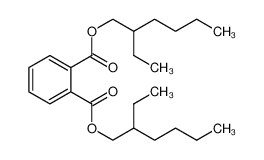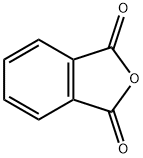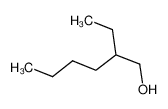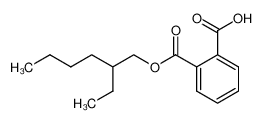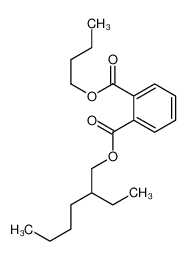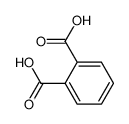| Product name | Bis(2-ethylhexyl) phthalate |
|---|
| Product number | - |
|---|---|
| Other names | 1,2-Benzenedicarboxylic acid, bis(2-ethylhexyl) ester |
| Identified uses | For industry use only. Phthalates |
|---|---|
| Uses advised against | no data available |
| Company | MOLBASE (Shanghai) Biotechnology Co., Ltd. |
|---|---|
| Address | Floor 4 & 5, Building 12, No. 1001 North Qinzhou Road, Xuhui District, Shanghai, China |
| Telephone | +86(21)64956998 |
| Fax | +86(21)54365166 |
| Emergency phone number | +86-400-6021-666 |
|---|---|
| Service hours | Monday to Friday, 9am-5pm (Standard time zone: UTC/GMT +8 hours). |
Reproductive toxicity, Category 1B
2.2 GHS label elements, including precautionary statements| Pictogram(s) |  |
|---|---|
| Signal word | Danger |
| Hazard statement(s) | H360FD |
| Precautionary statement(s) | |
| Prevention | P201 Obtain special instructions before use. P202 Do not handle until all safety precautions have been read and understood. P280 Wear protective gloves/protective clothing/eye protection/face protection. |
| Response | P308+P313 IF exposed or concerned: Get medical advice/ attention. |
| Storage | P405 Store locked up. |
| Disposal | P501 Dispose of contents/container to ... |
none
3.Composition/information on ingredients 3.1 Substances| Chemical name | Common names and synonyms | CAS number | EC number | Concentration |
|---|---|---|---|---|
| Bis(2-ethylhexyl) phthalate | Bis(2-ethylhexyl) phthalate | 117-81-7 | none | 100% |
Consult a physician. Show this safety data sheet to the doctor in attendance.
If inhaledFresh air, rest.
In case of skin contactRemove contaminated clothes. Rinse skin with plenty of water or shower.
In case of eye contactFirst rinse with plenty of water for several minutes (remove contact lenses if easily possible), then refer for medical attention.
If swallowedRinse mouth. Give one or two glasses of water to drink.
4.2 Most important symptoms/effects, acute and delayedInhalation can cause nausea and irritation of nose and throat. Contact of liquid with eyes or skin causes irritation. Ingestion can cause abdominal cramps, nausea and diarrhea. (USCG, 1999)
4.3 Indication of immediate medical attention and special treatment needed, if necessaryImmediate first aid: Ensure that adequate decontamination has been carried out. If patient is not breathing, start artificial respiration, preferably with a demand-valve resuscitator, bag-valve-mask device, or pocket mask, as trained. Perform CPR as necessary. Immediately flush contaminated eyes with gently flowing water. Do not induce vomiting. If vomiting occurs, lean patient forward or place on left side (head-down position, if possible) to maintain an open airway and prevent aspiration. Keep patient quiet and maintain normal body temperature. Obtain medical attention. /Esters and related compounds/
5.Fire-fighting measures 5.1 Extinguishing media Suitable extinguishing mediaDry powder, carbon dioxide, foam. Water or foam may cause frothing.
5.2 Specific hazards arising from the chemicalSpecial Hazards of Combustion Products: Irritating vapors and toxic gases, such as carbon dioxide and carbon monoxide, may be formed when involved in fire. Behavior in Fire: Overheating of containers during fire can result in rupture. (USCG, 1999)
5.3 Special protective actions for fire-fightersWear self-contained breathing apparatus for firefighting if necessary.
6.Accidental release measures 6.1 Personal precautions, protective equipment and emergency proceduresUse personal protective equipment. Avoid dust formation. Avoid breathing vapours, mist or gas. Ensure adequate ventilation. Evacuate personnel to safe areas. Avoid breathing dust. For personal protection see section 8.
6.2 Environmental precautionsPersonal protection: chemical protection suit. Remove all ignition sources. Collect leaking and spilled liquid in sealable containers as far as possible. Absorb remaining liquid in sand or inert absorbent. Then store and dispose of according to local regulations.
6.3 Methods and materials for containment and cleaning upAccident Release Measures. Personal precautions, protective equipment and emergency procedures: Use personal protective equipment. Avoid breathing vapors, mist or gas. Ensure adequate ventilation. Evacuate personnel to safe areas. Environmental precautions: Prevent further leakage or spillage if safe to do so. Do not let product enter drains. Methods and materials for containment and cleaning up: Soak up with inert absorbent material and dispose of as hazardous waste. Keep in suitable, closed containers for disposal.
7.Handling and storage 7.1 Precautions for safe handlingAvoid contact with skin and eyes. Avoid formation of dust and aerosols. Avoid exposure - obtain special instructions before use.Provide appropriate exhaust ventilation at places where dust is formed. For precautions see section 2.2.
7.2 Conditions for safe storage, including any incompatibilitiesSeparated from strong oxidants, acids, alkalis and nitrates. Cool. Dry. Well closed.Keep container tightly closed in a dry and well-ventilated place. Containers which are opened must be carefully resealed and kept upright to prevent leakage.
8.Exposure controls/personal protection 8.1 Control parameters Occupational Exposure limit valuesRecommended Exposure Limit: 10 Hr Time-Weighted Avg: 5 mg/cu m.
Recommended Exposure Limit: 15 Min Short-Term Exposure Limit: 10 mg/cu m.
NIOSH considers bis-(2-ethylhexyl)-phthalate to be a potential occupational carcinogen.
NIOSH usually recommends that occupational exposures to carcinogens be limited to the lowest feasible concentration.
Biological limit valuesno data available
8.2 Appropriate engineering controlsHandle in accordance with good industrial hygiene and safety practice. Wash hands before breaks and at the end of workday.
8.3 Individual protection measures, such as personal protective equipment (PPE) Eye/face protectionSafety glasses with side-shields conforming to EN166. Use equipment for eye protection tested and approved under appropriate government standards such as NIOSH (US) or EN 166(EU).
Skin protectionWear impervious clothing. The type of protective equipment must be selected according to the concentration and amount of the dangerous substance at the specific workplace. Handle with gloves. Gloves must be inspected prior to use. Use proper glove removal technique(without touching glove's outer surface) to avoid skin contact with this product. Dispose of contaminated gloves after use in accordance with applicable laws and good laboratory practices. Wash and dry hands. The selected protective gloves have to satisfy the specifications of EU Directive 89/686/EEC and the standard EN 374 derived from it.
Respiratory protectionWear dust mask when handling large quantities.
Thermal hazardsno data available
9.Physical and chemical properties| Physical state | clear liquid |
|---|---|
| Colour | Liquid |
| Odour | Slight odor |
| Melting point/ freezing point | 3°C(lit.) |
| Boiling point or initial boiling point and boiling range | 386°C(lit.) |
| Flammability | Class IIIB Combustible Liquid: Fl.P. at or above 93.33°C.Combustible. Gives off irritating or toxic fumes (or gases) in a fire. |
| Lower and upper explosion limit / flammability limit | Lower flammable limit: 0.3% by volume at 474 deg F (245°C) |
| Flash point | 207°C |
| Auto-ignition temperature | 390.56°C |
| Decomposition temperature | no data available |
| pH | no data available |
| Kinematic viscosity | 22 cSt at 20°C; 386 cSt at 0°C; 5 cSt at 100°C |
| Solubility | In water:Negligible |
| Partition coefficient n-octanol/water (log value) | log Kow = 7.60 |
| Vapour pressure | 1.2 mm Hg ( 93 °C) |
| Density and/or relative density | 0.985g/mLat 20°C(lit.) |
| Relative vapour density | >16 (vs air) |
| Particle characteristics | no data available |
no data available
10.2 Chemical stabilityStable
10.3 Possibility of hazardous reactionsDI(2-ETHYLHEXYL) PHTHALATE reacts with acids to liberate heat along with alcohols and acids. Strong oxidizing acids may cause a vigorous reaction that is sufficiently exothermic to ignite the reaction products. Heat is also generated by the interaction of esters with caustic solutions. Flammable hydrogen is generated by mixing with alkali metals and hydrides. Incompatible with nitrates .
10.4 Conditions to avoidno data available
10.5 Incompatible materialsStrong oxidizing agents
10.6 Hazardous decomposition productsWhen heated to decomp it emits acrid smoke.
11.Toxicological information Acute toxicity- Oral: LD50 Rat oral >25 g/kg
- Inhalation: no data available
- Dermal: no data available
no data available
Serious eye damage/irritationno data available
Respiratory or skin sensitizationno data available
Germ cell mutagenicityno data available
CarcinogenicityNTP: Reasonably anticipated to be a human carcinogen
Reproductive toxicityNo information is available on the reproductive or developmental effects of DEHP in humans. No reproductive or developmental effects were observed in animal studies from inhalation exposure to DEHP. DEHP has been demonstrated to cause developmental toxicity, such as birth defects, in rats and mice from oral exposure. Reproductive effects, such as decreased fertility, proportion of pups born alive, and testicular weights and tubular atrophy, have also been noted from oral exposure to DEHP in animals.
STOT-single exposureno data available
STOT-repeated exposureno data available
Aspiration hazardno data available
12.Ecological information 12.1 Toxicity- Toxicity to fish: LC50; Species: Lepomis macrochirus (Bluegill); Concentration: >770,000 ug/L for 96 hr /Conditions of bioassay not specified
- Toxicity to daphnia and other aquatic invertebrates: LC50; Species: Daphnia magna (Water flea) age <24 hr; Conditions: freshwater, static, 22°C pH 8.0 (7.4-9.4), hardness 173 mg/L CaCO3; Concentration: 68,000 ug/L for 24 hr />80% purity
- Toxicity to algae: EC50; Species: Pseudokirchneriella subcapitata (Green algae) Log growth phase, 50000 cells/mL; Conditions: freshwater, static, 23°C, hardness: 54.3 mg/L CaCO3; Concentration: >320 ug/L for 96 hr; Effect: growth, general /97% purity
- Toxicity to microorganisms: no data available
AEROBIC: Bis(2-ethylhexyl) phthalate was degraded with gradual adaptation; 0, 43, 80, and 95% biodegradation were observed in the original culture, first, second, and third weekly subcultures, respectively, in static flask screening tests using a settled domestic wastewater inoculum(1). A biodegradation half-life of 0.8 days has been reported for bis(2-ethylhexyl) phthalate in activated sludge(2). Bis(2-ethylhexyl) phthalate subjected to static culture flask biodegradability tests was almost completely bio-oxidized at the end of 3 weeks(3). Greater than 64% removal of bis(2-ethylhexyl) phthalate was observed in a low-loaded activated sludge reactor and a biological aerated filter(4). In a biodegradability screening test using an activated sludge inoculum based on carbon dioxide evolution, bis(2-ethylhexyl) phthalate reached 4 to 5% theoretical amount of CO2 after 28 days at an initial carbon content of 34.1 to 38.7 mg/L(5). In a trickling filter system and an activated sludge system, 76 and 71% removal of bis(2-ethylhexyl) phthalate was observed, respectively(6). A mean of 81.5% biodegradation of bis(2-ethylhexyl) phthalate was observed after 24 hours in semi-continuous activated sludge tests; 4 days were required to reach >90% biodegradation in the activated sludge die-away portion of this test(7). Bis(2-ethylhexyl) phthalate had a half-life of 23 days in wastewater treatment plants(8). Bis(2-ethylhexyl) phthalate was degraded 82% in 28 days using the modified Sturm test(9). Aerobic biodegradation products of bis(2-ethylhexyl) phthalate incubated in sewage sludge include 2-ethylhexanol, 2-ethylhexanal and 2-ethylhexanoic acid(10).
12.3 Bioaccumulative potentialExperimental BCF values range from a log 2 to 4 in fish and invertebrates(1-7). Log BCFs of 2.93 and 2.06 were measured in fathead minnows (Pimephales promelas)(2) and bluegill sunfish (Lepomis macrochirus), respectively(3). BCF values of <0.7-29.7 and 1-3.4 were reported using carp (Cyprinus carpio) which were exposed over an 8-week period to bis(2-ethylhexyl) phthalate concentrations of 0.1 and 1.0 ppm, respectively(8). According to a classification scheme(9), these BCFs suggest that bioconcentration in aquatic organisms is low to very high(SRC). Experiments with rainbow trout (Salmo gairdneri) showed that the majority of (14)C-bis(2-ethylhexyl) phthalate did not reach the systemic circulation of the fish, but was present in the exposure water as metabolites as a result of pre-systemic branchial metabolism of this compound during uptake from the water to the blood(10). Biota-sediment accumulation factors were 1.0, 0.5 and 1.3 in roach (Rutilus rutilus), chub (Leuciscus cephalus) and perch (Perca fluviatilis), respectively; fish were collected from the Orge River, France from Jul 2009 to Apr 2010(11). BCFs of 0.02-0.11 were reported for bis(2-ethylhexyl) phthalate in water spinach (Ipomoea aquatica) grown under different conditions on sludge from waste water treatment plants in China(12). BCFs of 6.71-93.70 L/kg were reported for bis(2-ethylhexyl) phthalate in the submerged water plant Potamogeton crispus L.; plants were grown in the Haihe River, China from Mar to May 2008(13).
12.4 Mobility in soilLog Koc values of 4 to 5 have been reported for bis(2-ethylhexyl) phthalate in clays and sediments(1). A Koc of 87,420 was measured in soil from Broome County, NY, for bis(2-ethylhexyl) phthalate(2). Bis(2-ethylhexyl) phthalate had measured log Koc values of 5.17-6.23(3), 5.72(4), 4.94(5), 5.68 and 5.72(6). Soil/sediment Koc values range from 87,420 to 510,000(7). Suspended solid Koc values range from 22,000 to 1X10+6(7). According to a recommended classification scheme(8), these measured Koc values suggest that bis(2-ethylhexyl) phthalate is expected to be immobile in soil(SRC).
12.5 Other adverse effectsno data available
13.Disposal considerations 13.1 Disposal methods ProductThe material can be disposed of by removal to a licensed chemical destruction plant or by controlled incineration with flue gas scrubbing. Do not contaminate water, foodstuffs, feed or seed by storage or disposal. Do not discharge to sewer systems.
Contaminated packagingContainers can be triply rinsed (or equivalent) and offered for recycling or reconditioning. Alternatively, the packaging can be punctured to make it unusable for other purposes and then be disposed of in a sanitary landfill. Controlled incineration with flue gas scrubbing is possible for combustible packaging materials.
14.Transport information 14.1 UN Number| ADR/RID: UN3082 | IMDG: UN3082 | IATA: UN3082 |
| ADR/RID: ENVIRONMENTALLY HAZARDOUS SUBSTANCE, LIQUID, N.O.S. |
| IMDG: ENVIRONMENTALLY HAZARDOUS SUBSTANCE, LIQUID, N.O.S. |
| IATA: ENVIRONMENTALLY HAZARDOUS SUBSTANCE, LIQUID, N.O.S. |
| ADR/RID: 9 | IMDG: 9 | IATA: 9 |
| ADR/RID: III | IMDG: III | IATA: III |
| ADR/RID: no | IMDG: no | IATA: no |
no data available
14.7 Transport in bulk according to Annex II of MARPOL 73/78 and the IBC Codeno data available
15.Regulatory information 15.1 Safety, health and environmental regulations specific for the product in question| Chemical name | Common names and synonyms | CAS number | EC number |
|---|---|---|---|
| Bis(2-ethylhexyl) phthalate | Bis(2-ethylhexyl) phthalate | 117-81-7 | none |
| European Inventory of Existing Commercial Chemical Substances (EINECS) | Listed. | ||
| EC Inventory | Listed. | ||
| United States Toxic Substances Control Act (TSCA) Inventory | Listed. | ||
| China Catalog of Hazardous chemicals 2015 | Not Listed. | ||
| New Zealand Inventory of Chemicals (NZIoC) | Listed. | ||
| Philippines Inventory of Chemicals and Chemical Substances (PICCS) | Listed. | ||
| Vietnam National Chemical Inventory | Listed. | ||
| Chinese Chemical Inventory of Existing Chemical Substances (China IECSC) | Listed. | ||
| Creation Date | Aug 10, 2017 |
|---|---|
| Revision Date | Aug 10, 2017 |
- CAS: Chemical Abstracts Service
- ADR: European Agreement concerning the International Carriage of Dangerous Goods by Road
- RID: Regulation concerning the International Carriage of Dangerous Goods by Rail
- IMDG: International Maritime Dangerous Goods
- IATA: International Air Transportation Association
- TWA: Time Weighted Average
- STEL: Short term exposure limit
- LC50: Lethal Concentration 50%
- LD50: Lethal Dose 50%
- EC50: Effective Concentration 50%
- IPCS - The International Chemical Safety Cards (ICSC), website: http://www.ilo.org/dyn/icsc/showcard.home
- HSDB - Hazardous Substances Data Bank, website: https://toxnet.nlm.nih.gov/newtoxnet/hsdb.htm
- IARC - International Agency for Research on Cancer, website: http://www.iarc.fr/
- eChemPortal - The Global Portal to Information on Chemical Substances by OECD, website: http://www.echemportal.org/echemportal/index?pageID=0&request_locale=en
- CAMEO Chemicals, website: http://cameochemicals.noaa.gov/search/simple
- ChemIDplus, website: http://chem.sis.nlm.nih.gov/chemidplus/chemidlite.jsp
- ERG - Emergency Response Guidebook by U.S. Department of Transportation, website: http://www.phmsa.dot.gov/hazmat/library/erg
- Germany GESTIS-database on hazard substance, website: http://www.dguv.de/ifa/gestis/gestis-stoffdatenbank/index-2.jsp
- ECHA - European Chemicals Agency, website: https://echa.europa.eu/





